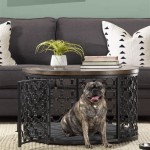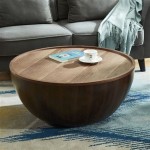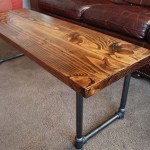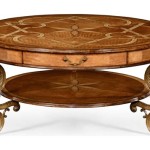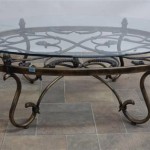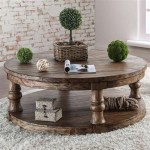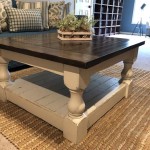How to Refinish A Table With Chalk Paint
Refinishing a table can breathe new life into a worn or outdated piece of furniture, transforming it into a focal point within a room. Chalk paint, known for its matte finish and ease of application, is a popular choice for DIY enthusiasts tackling furniture refinishing projects. Its ability to adhere to various surfaces with minimal preparation makes it an attractive option for both beginners and experienced refinishers. This article provides a comprehensive guide on how to successfully refinish a table using chalk paint, covering essential steps from preparation to finishing.
Preparing the Table Surface
Proper preparation is crucial for achieving a durable and aesthetically pleasing finish. While one of chalk paint's benefits is its ability to adhere to surfaces with minimal prep work, some steps are necessary to ensure optimal results. The first step involves cleaning the table thoroughly. Use a mild detergent and warm water to remove any dirt, grease, or grime. Rinse the surface with clean water and allow it to dry completely. This removes any substances that could interfere with the paint's adhesion.
Next, inspect the table for any loose paint, varnish, or imperfections. If the existing finish is peeling or flaking, it will need to be addressed before applying chalk paint. Use a scraper or sandpaper to remove any loose material. For areas with stubborn finishes, a chemical stripper might be necessary. Always follow the manufacturer's instructions when using chemical strippers and ensure proper ventilation. Avoid excessive sanding as chalk paint often works well even on slightly rough surfaces. The goal is not to remove all of the existing finish, but rather to create a smooth and stable base for the chalk paint to adhere to.
If the table has any significant dents or scratches, consider filling them with wood filler. Apply the filler according to the manufacturer's instructions, allowing it to dry completely before sanding it smooth. Choose a wood filler that is sandable and paintable to ensure seamless integration with the surrounding surface. Once the filler is dry, use fine-grit sandpaper to blend it with the existing wood. This will create a uniform surface that is ready for priming, if necessary.
Addressing existing stain is a key consideration. While chalk paint often covers existing finishes well, dark or vibrant stains might bleed through lighter shades of chalk paint. In such cases, applying a primer is recommended. Choose a stain-blocking primer to prevent the underlying stain from seeping through the chalk paint. Apply the primer in thin, even coats, allowing it to dry completely between coats. Two coats of primer might be necessary to effectively block the stain. Proper priming ensures a consistent and professional-looking finish.
Finally, consider the hardware on the table. If you plan to replace the hardware, remove it before painting. If you intend to keep the existing hardware, you have two options: either carefully paint around it or remove it, paint it separately, and then reattach it. Removing the hardware is generally the preferred method for achieving a clean and professional look. If painting the hardware, use a metal primer and paint suitable for metal surfaces.
Applying Chalk Paint
Once the table is properly prepared, the next step is to apply the chalk paint. Before opening the paint can, thoroughly stir the paint to ensure a consistent color and texture. Chalk paint can sometimes settle, so stirring redistributes the pigments and binders. Avoid shaking the can, as this can introduce air bubbles into the paint.
Choose the right application method. Chalk paint can be applied with a brush, roller, or sprayer. A brush is the most common choice for smaller projects and allows for more control over the paint application. Use a high-quality brush with synthetic bristles to minimize brushstrokes. A roller can be used for larger surfaces to achieve a smoother finish, but it might require more coats to achieve full coverage. A sprayer is ideal for achieving a very smooth and even finish, but it requires more experience and equipment.
Begin by applying thin, even coats of chalk paint. Avoid applying the paint too thickly, as this can lead to drips and uneven drying. Work in sections, overlapping each stroke slightly to ensure complete coverage. Allow each coat to dry completely before applying the next coat. The drying time will vary depending on the specific chalk paint and the ambient humidity. Refer to the manufacturer's instructions for recommended drying times.
Typically, two to three coats of chalk paint are required to achieve full coverage. After each coat, inspect the surface for any imperfections or areas that need additional attention. Lightly sand any rough spots with fine-grit sandpaper to create a smooth surface for the next coat. Be careful not to sand through the paint layers, especially on edges and corners.
Consider the painting technique to achieve the desired aesthetic. Chalk paint is known for its versatility, and different application techniques can create various effects. For a smooth and modern look, apply the paint in even, consistent strokes. For a more textured and rustic look, use a stippling or dry-brushing technique. Dry brushing involves using a brush with very little paint on it to create a distressed effect. Experiment with different techniques on a test piece of wood before applying them to the table.
If you are aiming for a distressed look, you can sand the edges and corners of the table after the paint has dried. Use fine-grit sandpaper to gently remove some of the paint, revealing the underlying wood or paint layers. This technique adds character and a vintage feel to the finished piece. Be careful not to over-sand, as this can damage the paint finish.
Sealing and Protecting the Finish
Chalk paint, due to its porous nature, requires a sealant to protect it from moisture, stains, and everyday wear and tear. Sealing the chalk paint is a critical step in ensuring the longevity and durability of the finish. There are several options for sealing chalk paint, each with its own advantages and disadvantages.
Wax is a popular choice for sealing chalk paint. It provides a soft, matte finish and adds a subtle depth to the color. Apply the wax with a brush or cloth, working it into the paint in a circular motion. Allow the wax to dry for a few minutes, then buff it with a clean cloth to create a smooth and protective layer. Multiple coats of wax can be applied for added protection. Wax is relatively easy to apply and maintain, but it is not as durable as other sealants.
Polyurethane is a more durable option for sealing chalk paint. It provides a hard, protective layer that is resistant to scratches, stains, and water damage. Polyurethane is available in various sheens, from matte to glossy, allowing you to customize the finish to your preference. Apply the polyurethane in thin, even coats, using a brush or sprayer. Allow each coat to dry completely before applying the next coat. Polyurethane can sometimes yellow over time, especially when applied over light colors, so choose a non-yellowing formula.
Lacquer is another durable option for sealing chalk paint, but it requires specialized equipment and experience. Lacquer provides a very hard and smooth finish that is resistant to scratches and chemicals. It is typically applied with a sprayer and requires proper ventilation. Lacquer is not recommended for beginners due to its complexity and potential hazards.
Consider the intended use of the table when choosing a sealant. If the table will be used frequently and exposed to spills or moisture, a more durable sealant like polyurethane or lacquer is recommended. If the table will be used less frequently and you prefer a softer, more matte finish, wax might be a suitable option.
Before applying the sealant to the entire table, test it on a small, inconspicuous area to ensure that it does not react negatively with the chalk paint. Some sealants can cause the chalk paint to change color or become streaky. Once you are satisfied with the results, apply the sealant to the entire table, following the manufacturer's instructions.
After the sealant has dried completely, inspect the surface for any imperfections or areas that need additional attention. Lightly buff the surface with a clean cloth to create a smooth and even finish. You can also apply additional coats of sealant for added protection. Allow the sealant to cure completely before using the table. The curing time will vary depending on the specific sealant, but it typically takes several days.

How To Refinish Furniture With Chalk Paint A Mom S Take

How To Refinish Furniture With Chalk Paint A Mom S Take

How To Refinish A Table Using Chalk Paint
Gorgeous Chalk Paint Dining Table Makeover Diy Kindly Unspoken

How To Chalk Paint A Table And Chairs Confessions Of Serial Do It Yourselfer

Chalk Paint Furniture Before And After Thirty Eighth Street

Do S Dont Painting Furniture With Chalk Paint Milk

The Beginner S Guide To Painting Furniture With Chalk Paint Small Stuff Counts

How To Refinish Furniture With Chalk Paint

Old Thrift Coffee Table Transformed With Chalk Paint Polyshades Artsy Rule
Related Posts

